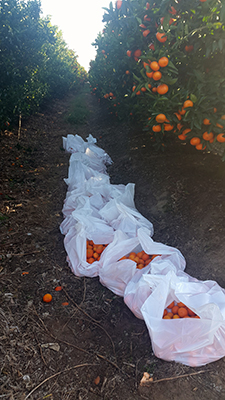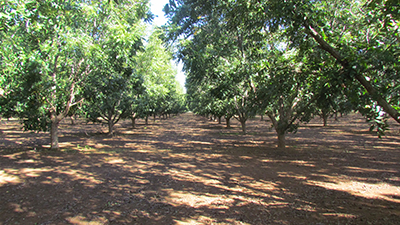Latest News Archive
Please select Category, Year, and then Month to display items
20 August 2025
|
Story Dr Annelize Oosthuizen
|
Photo Supplied
 Dr Annelize Oosthuizen, Subject Head of Taxation in the School of Accountancy, University of the Free State.
Dr Annelize Oosthuizen, Subject Head of Taxation in the School of Accountancy, University of the Free State.
With the two-pot retirement system having been effective from 1 September 2024, it is important to demystify certain aspects to prevent an unpleasant surprise when you retire. Although there are other complex rules, this article was simplified and does not deal with exceptions. It also does not deal with members of a provident fund who were 55 years of age or older on 1 March 2021. Furthermore, reference to retirement funds is to a pension fund, provident fund or a retirement annuity fund (a discussion on preservation funds is therefore excluded).
Three, not two pots
Firstly, there are effectively three pots and not two.
- The first pot is referred to as the vested component. You will only have this component if you were a member of a retirement fund prior to 1 September 2024. This component consists of the member’s interest (balance) in the retirement fund on 31 August 2024 (the day before the implementation of the two-pot system) after being reduced with the amount of the seed capital that was transferred to the savings pot (see below). This seed capital amount was calculated as the lesser of 10% of the value of the member’s interest in the fund on 31 August 2024 or R30 000. No further contributions will be allocated to this component from 1 September 2024. Upon retirement, one-third of the funds in this component can be taken in the form of a lump sum. The balance will be transferred to the retirement component below and will be paid out in the form of monthly annuities.
- The second pot is the savings component. The opening balance of the savings component is the seed capital that was transferred from the vested component above. Thereafter, from 1 September 2024, one third of your monthly contributions to the retirement fund are allocated to this component.
- The third pot is the retirement component. From 1 September 2024, two-thirds of your monthly contributions to the retirement fund are allocated to this component. The funds in this component can only be accessed upon retirement (i.e. after reaching your retirement age, which is stipulated in the fund rules). Furthermore, upon retirement, the money in this pot is only paid out in the form of monthly annuities (i.e. monthly pensions) and no lump sum can be taken from this pot unless its total value is R165 000 or less.
Withdrawals are taxed unfavourably
Secondly, withdrawing from the savings component before retirement has adverse tax implications.
- From 1 September 2024 onwards, one is allowed to make an annual withdrawal (minimum of R2 000) from the savings component even if you have not yet reached your retirement age and although you are still employed. It is, however, important to remember that such withdrawals are taxed very unfavourably since they are taxed by using the normal progressive tax tables that apply to your other income such as salary. If you wait for your retirement and only withdraw from this savings component upon retirement, the first R550 000 will be tax-free and withdrawals above R550 000 will be taxed at rates much lower than the current progressive tax rates applicable to other income.
- Upon retirement, only the money in the savings component is allowed to be taken as a lump sum. If you therefore withdraw all the money from this pot annually prior to retirement, you will not have any funds available to access as a lump sum on retirement and will only have access to the monthly annuities payable from your retirement component.
Less funds available
Lastly, for those members who have a vested component (i.e. who became members of the retirement fund before 1 September 2024), the old rules still apply to the funds in that component. Therefore, upon retirement, you will still be able to take one third of the value of your vested component as a lump sum. The balance will be transferred to the retirement pot and will be paid out in the form of monthly annuities.
To summarise, even though it might appear lucrative to withdraw from your savings component annually, it is advised that you refrain from doing it unless you really need the funds to fulfill basic needs. Withdrawing prior to retirement has the following adverse consequences:
- Money withdrawn from the savings component is taxed at higher rates than what would have applied had you reached your retirement age and retired. You will therefore not make use of the R550 000 tax-free option.
- You will have less funds available to pay out as a lump sum on retirement. As a simple calculation, had you not withdrawn R30 000 in a single year, conservatively calculated at a rate of 5%, this R30 000 would have grown to R79 599 (R139 829 if a rate of 8% is used) calculated over 20 years that can be withdrawn tax-free when utilising the R550 000 tax-free portion on retirement.
Plant eco-physiologist finds effective solutions for crop optimisation
2016-07-24

The bio-stimulant was tested on
this citrus. This is the first time
that the product has been tested
on a crop.
In a time characterised by society facing increasing population growth, food crises, and extreme climatic conditions such as drought, it is essential for farmers to integrate science with their work practices in order to optimise crops.
Role of photosynthesis and plant sap data
By knowing how to use photosynthesis and plant sap data for determining plant health, fast and effective solutions could be established for the optimisation of crops. This technique, which could help farmers utilise every bit of usable land effectively, is the focus of Marguerite Westcott’s PhD study. She is a junior lecturer and plant eco-physiologist in die Department of Plant Sciences at the University of the Free State.
Westcott uses this technique in her studies to prove that a newly-developed bio-stimulant stimulates plants in order to metabolise water and other nutrients better, yielding increased crops as a result.
Agricultural and mining sectors benefit from research
The greatest part of these projects focuses on the agricultural sector. Westcott and a colleague, Dr Gert Marais, are researching the physiology of pecan and citrus trees in order to optimise the growth of these crops, thus minimising disease through biological methods. Field trials are being conducted in actively-producing orchards in the Hartswater and Patensie areas in conjunction with the South African Pecan Nut Producers Association (SAPPA) amongst others.
The principles that Westcott applies in her research are also used in combination with the bio-stimulant in other studies on disturbed soil, such as mine-dump material, for establishing plants in areas where they would not grow normally. This is an economical way for both the agricultural and mining sectors to improve nutrient absorption, stimulate growth, and contribute to the sustainable utilisation of the soil.

The bio-stimulant contributes to the immunity of the plants.
It was tested in these pecan nut orchards (Hartswater).
Soil rehabilitation key aspect in research projects
“One of two things is happening in my research projects. Either the soil is rehabilitated to bring about the optimal growth of a plant, or the plants are used to rehabilitate the soil,” says Westcott.
Data surveys for her PhD studies began in 2015. “This will be a long-term project in which seasonal data will be collected continuously. The first set of complete field data, together with pot trial data, will be completed after the current crop harvest,” says Westcott.